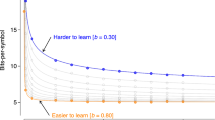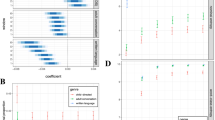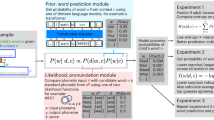Abstract
To be able to communicate in ordinary English, a machine must have access to common sense information about the real world. The first computer systems to attempt such communication lived in very limited worlds. Now, with a “second generation” of programs, those worlds are widening, although the exact significance of the recent advances is still in dispute.
This is a preview of subscription content, access via your institution
Access options
Subscribe to this journal
Receive 51 print issues and online access
$199.00 per year
only $3.90 per issue
Buy this article
- Purchase on Springer Link
- Instant access to full article PDF
Prices may be subject to local taxes which are calculated during checkout
Similar content being viewed by others
References
Lighthill, J., in Artificial Intelligence: a paper symposium, 5–16 (Science Research Council 1973).
Winograd, T., Understanding Natural Language (Edinburgh University Press, Edinburgh, 1972).
Hewitt, C., in Proc. Internal. Joint Conf. on Artificial Intelligence, 295–301 (Mitre Bedford, Massachusetts, 1969).
Halliday, M. A. K., in Foundations of Language, 6, 322–361 (1970).
Bobrow, D., in Semantic Information Processing, 133–215, edit by Minsky, M., (MIT Press, Cambridge, Massachussetts, 1968).
Wittgenstein, L., Philosophical Investigations (Blackwell, Oxford, 1953).
Kuhn, T. S., The structure of scientific revolutions, 2nd ed. (University of Chicago Press, Chicago, 1970).
Chomsky, N., Syntactic Structures, (Mouton, The Hague, 1957).
Rubin, A., Grammar for the people, (MIT, Artificial Intelligence Lab. Memo No. 282, 1973).
Simmons, R. F., Some semantic structures for representing English meanings, Tech. p. no. NL-1 (University of Austin, Texas, 1970).
Schank, R., Goldman, N., Rieger, C., and Riesbeck, C., in Advanced Papers of the Third International Joint Conference on Artificial Intelligence, 255–261 (Stanford Resesrch Institute, 1973).
Wilks, Y., ibid. 270–277.
Charniak, E., ibid. 337–343.
Author information
Authors and Affiliations
Rights and permissions
About this article
Cite this article
Wilks, Y. Do machines understand more than they did?. Nature 252, 275–278 (1974). https://doi.org/10.1038/252275a0
Issue Date:
DOI: https://doi.org/10.1038/252275a0
This article is cited by
-
Computer programming as a cognitive paradigm
Nature (1975)
Comments
By submitting a comment you agree to abide by our Terms and Community Guidelines. If you find something abusive or that does not comply with our terms or guidelines please flag it as inappropriate.



